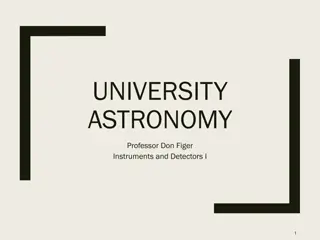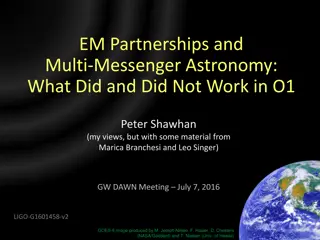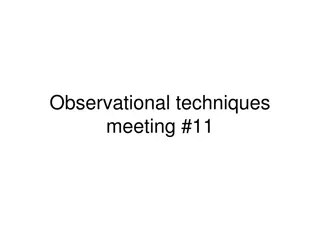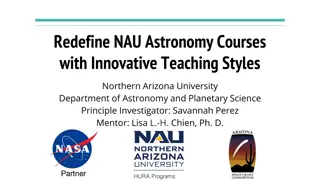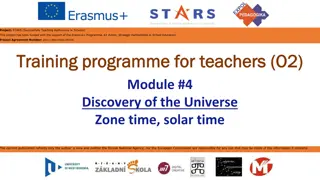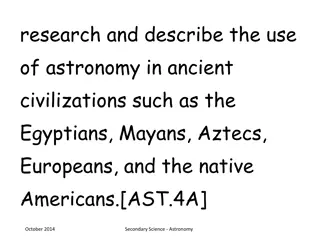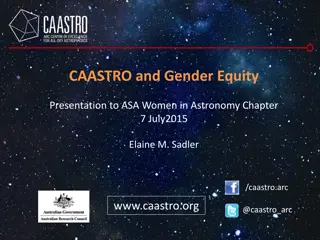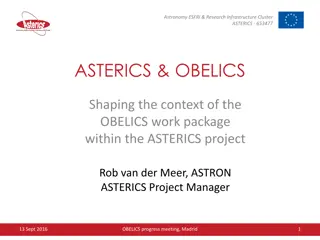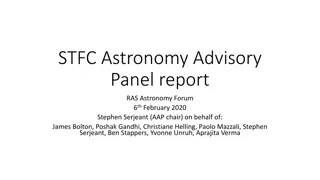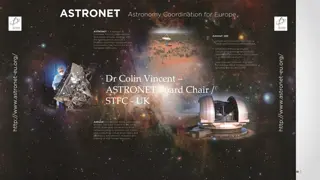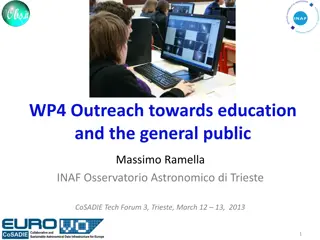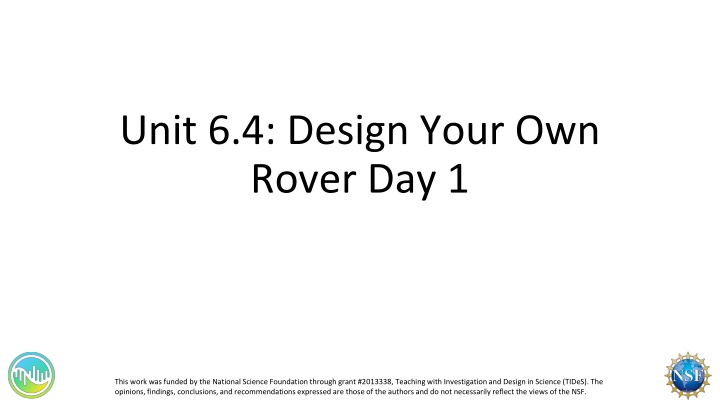
Design Your Own Rover - Factors to Consider and Mission Goals
Explore the important factors to consider when designing a rover, along with generating mission goals for resource identification and extraction. Discuss and compare ideas in small group homework sessions, and showcase your rover on a poster board or Google Slide presentation. Get creative and envision the equipment needed to accomplish your mission goals effectively.
Download Presentation

Please find below an Image/Link to download the presentation.
The content on the website is provided AS IS for your information and personal use only. It may not be sold, licensed, or shared on other websites without obtaining consent from the author. If you encounter any issues during the download, it is possible that the publisher has removed the file from their server.
You are allowed to download the files provided on this website for personal or commercial use, subject to the condition that they are used lawfully. All files are the property of their respective owners.
The content on the website is provided AS IS for your information and personal use only. It may not be sold, licensed, or shared on other websites without obtaining consent from the author.
E N D
Presentation Transcript
Unit 6.4: Design Your Own Rover Day 1 This work was funded by the National Science Foundation through grant #2013338, Teaching with Investigation and Design in Science (TIDeS). The opinions, findings, conclusions, and recommendations expressed are those of the authors and do not necessarily reflect the views of the NSF.
Small Group Homework Discussion Part 1 Discuss and compare answers with your group: What are the most important factors that your group should consider (regarding your topic) when designing a rover? Start generating/refining potential mission goals i. Remember, the ultimate goal is resource identification and extraction. The focus of additional mission goals might be ones that lead up to that ( conduct a magnetic survey ).
Small Group Homework Discussion Part 2 Discuss and compare answers with your group: What are the most important factors that your group should consider (regarding your topic) when designing a rover? Start generating/refining potential mission goals i. Remember, the ultimate goal is resource identification and extraction. The focus of additional mission goals might be ones that lead up to that ( conduct a magnetic survey ). Describe what types of equipment your rover would need in order to accomplish these goals.
Small Group Homework Discussion Part 3 Discuss and compare answers with your group: What are the most important factors that your group should consider (regarding your topic) when designing a rover? Start generating/refining potential mission goals i. Remember, the ultimate goal is resource identification and extraction. The focus of additional mission goals might be ones that lead up to that ( conduct a magnetic survey ). Describe what types of equipment your rover would need in order to accomplish these goals. i. Check out these game cards for ideas! ii. Remember the cards are based on a mission to Mars. How would your rover/orbiter/etc. differ? iii. Sketch your rover/orbiter/etc. on the white board. Be sure to annotate key features/details. You will use this drawing in your google slide presentation.
Poster Board/ Google Slide Creation Showcase your rover including: Name of rover Planet explored Include any constraints due to the planet's characteristics Mission goals Type of lander/orbiter Photo of your lander/orbiter sketch Specific features of your lander/orbiter, be sure to explain: How those features relate back to the mission goals How those features can withstand the elements of their particular planet.
Peer Evaluations In your groups, review each team s rover slide and give critical feedback on the white board using post its. Things to be on the lookout for: Does the model lend well to the elements of the planet? Does the model lend well to the type of planet? I.e. Are they trying to land on a planet that is made up of gasses? What are your thoughts on their mission goals? Are they leaving anything out? Are they trying to find out something that is unnecessary? Does their rover have components that will be able to help complete their mission goals? I.e. If they are trying to discover resources in the sediment, do they have a device to dig/core?
Revisions Review peer feedback and make revisions to your orbiter/rover!
Day 1 Homework 1. Preview another team s rover slide and give feedback by tonight at 11:59pm 2. Prepare for your own group presentation a. Take feedback into consideration b. Slides for: the planet, previous missions/discoveries to the planet, and your rover design with explanation
Unit 6.4: Design Your Own Rover Day 2 This work was funded by the National Science Foundation through grant #2013338, Teaching with Investigation and Design in Science (TIDeS). The opinions, findings, conclusions, and recommendations expressed are those of the authors and do not necessarily reflect the views of the NSF.
Prepare for the Pitch Revise your rover/orbiter while taking peer feedback into consideration. Look critically at your design and prepare an enticing presentation with the hope that funding be approved to execute their mission goals. Your team will be taking us on a journey with your rover/orbiter. You will need to prepare slides and a presentation detailing the following: Planet conditions Potential resources to be extracted Previous missions/discoveries to the planet Mission goals Your rover design with explanation A scientist spotlight for each member of your team
Day 2 Homework Create a scientist spotlight for yourself! a. Your scientist spotlight will be added to your Planet Mission Project and will be presented during your NSF Funding pitch. b. It will include the following: your name, a few self portraits, a brief biography c. See an example on Canvas!
Unit 6.4: Design Your Own Rover Day 3 This work was funded by the National Science Foundation through grant #2013338, Teaching with Investigation and Design in Science (TIDeS). The opinions, findings, conclusions, and recommendations expressed are those of the authors and do not necessarily reflect the views of the NSF.
Todays Agenda 1. Peer Feedback Groups will review 1 other team's rover google slide/poster board and leave comments/ questions/ suggestions for revision. 2. Practice the Pitch Groups will revise their presentation slides based on peer feedback and practice their presentation 3. Presentations Each group will present information on their planet, previous missions/discoveries to the planet, their rover design with explanation, and scientist spotlights to the entire class. 4. Polls Open! Students will individually rank missions and then come to a consensus with a group ranking. 5. Rover Wrap Up Groups will make edits based on suggestions and submit their final rover proposal. 6. Unit 6 Astronomy Exit Ticket Individuals will complete the Exit Survey
Mapping SEP 1. Draw the Nyman and St. Clair web model of Science and Engineering Practices in your notebooks Recall the activities we have completed for each unit within unit 6. Map each activity/unit onto your webmodel. Be sure to number each step and briefly summarize the connection between the activity and the step including how the activity is tied to that step. i. Earth s Landforms ii.Planet X and Y landforms iii.Past Mars Missions iv.Exploring a new planet/moon v.Designing a Rover vi.Presenting NSF proposal 2. 3. From Nyman & St. Clair, 2016 Journal of College Science Teaching


